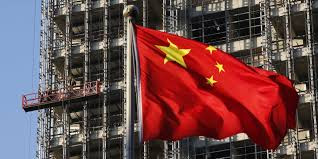Who really is China?
Written and accurate as at: Nov 15, 2018 Current Stats & Facts

China has been a great financial paradox for the last 15 years. China has transformed the financial well being of its population faster than Korea and Japan did in the post war years. While China was growing rapidly, investors and economists continued to be skeptical about the reality of this growth. The rare exception is Jim Roger who in 1992 went around China on his motorbike and published his book Investment Biker about China as the next great economic super power. Below are some key negative and positive points which had deterred and attracted professional investors to China.
We have seen repeated articles about China’s empty cities. On the latest count, there are probably 50 million apartments, that is 22% of the apartment stock as unoccupied. Interestingly this 22% has been constant since 2013 (the US has 10% of its apartments as unoccupied). The Chinese population does like to speculate and even though apartments are empty, most have been bought with the hope that they will be able to sell at higher prices. Also, some of these empty apartments are allegedly holiday homes which rarely get used due to the hustle and bustle of their city life.
China’s state-run organizations (SOE) were instrumental in the initial years to set up factories and infrastructure. A lot of leverage was used but these enterprises were inefficient and corrupt which has left China with a huge debt problem. China recognizes this problem and is trying to unwind this high level of debt. Can this be done without short term financial consequences is the unknown.
The trade war between the US and China has escalated. The US accuses China of encouraging low wages, low safety regulations, lack of pollution control, subsidies, etc. to be able to produce goods cheaply. The interesting aspect of this argument is that most emerging countries have started their economic journey based on this very premise. A lot of international large companies have taken advantage of these cheap labor costs to promote their business (Nike has famously been accused of using ‘sweatshops’).
The US accuses China of intellectual theft, but has that horse bolted. As per the latest statistics put out by the World Intellectual Property Organization, in 2016, China filed 42.8% of all patent applications versus US 19.4% and Japan 10.2%. The increase in Patent applications for China was 21.5%. China has 37.9% of all new trademarks applied for while the US is only 5.6%. The argument is that some of these patent applications may not be as important as the applications from the US and Japan but, the point is China is definitely a changing economy.
The structure of the Chinses economy is changing. In 2000 the US consumption levels were more than 12 times that of China and are now down to about 3 times. This change in the Chinese economy to a consumption led economy throws up lots of investment opportunities into domestic companies that are well placed to meet this consumption need. Being a new economy China has leap frogged into new technologies and now has probably the best established sharing economy. For an economy growing at over 5% (on a base of US12 Trillion) it is likely that the consumption part of the economy will grow at a faster pace.
China is now the world’s largest producer of energy from renewable sources. China produces more energy from renewable sources than the US and Europe and continues to be the largest investor in this field. A large motivator seems to be the desire to reduce pollution levels. China is a complex economy and requires the expertise of professional investors. The question to many investors is that can they afford to ignore investment opportunities in the world’s second largest economy.










